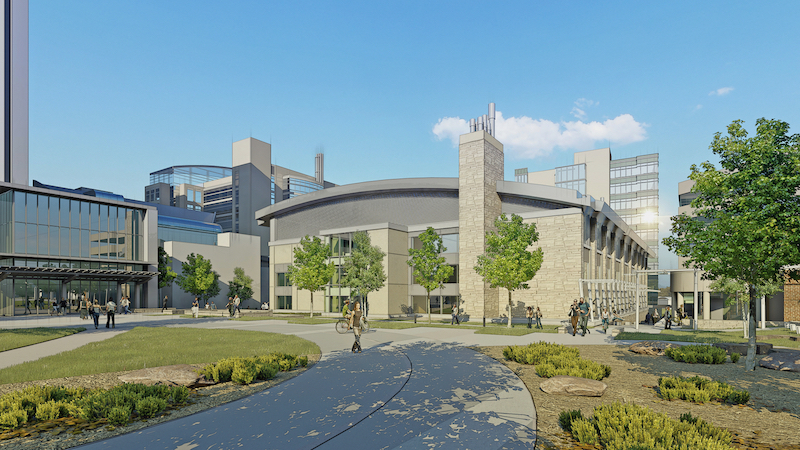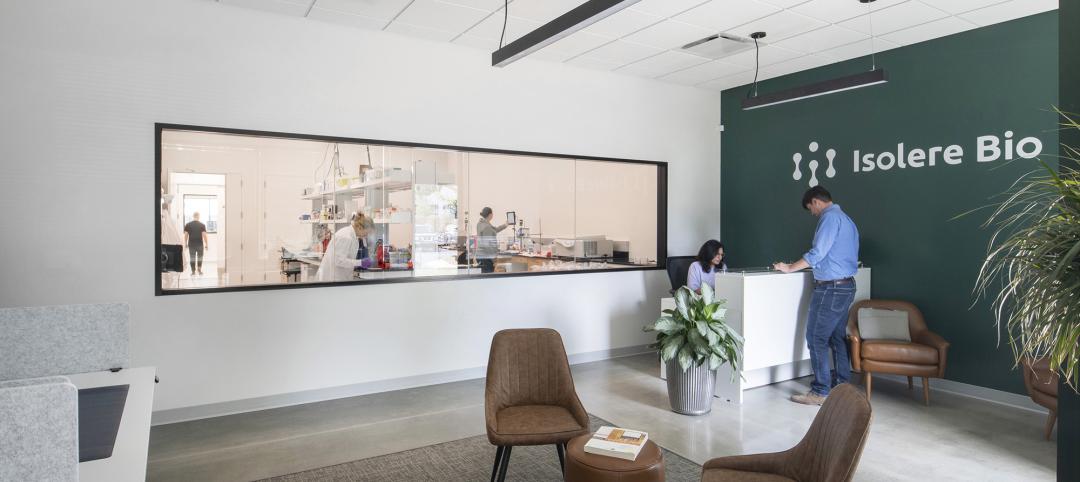Long before COVID-19 put the CDC front and center in news broadcasts around the country, plans to construct the most advanced High Containment Continuity Laboratory (HCCL) in the country had already been finalized.
The new, 160,000-sf facility will be part of the CDC’s 2025 Masterplan at the Roybal Campus in Atlanta. The multi-story research building will increase the CDC’s research capacity to sustain its diagnostic mission and support its public health mission by helping communities prepare for, detect, and respond to consequences of public health hazards. The HCCL building will be a Biosafety Level-4 (BSL-4) facility and accommodate approximately 80 laboratory researchers.
See Also: Georgia Tech Research Institute adds 350,000 sf of specialized tech facilities
As a BSL-4 facility, the project will feature high-efficiency particulate air filtered supply and exhaust air, air pressure resistant doors, pressure cascade zoning, effluent collection and treatment, pressure decay tested coatings and penetrations, and high purity breathing air and chemical decontamination showers for research staff. The new facility will connect with the existing Roybal Campus utility systems with below grade utility tunnels and a two-level bridge connection.
After completion, the HCCL will be one of three facilities in the world designed and certified to facilitate diagnostic research on specific, select viruses. The project is currently in the reconstruction/design phase with construction planned to begin in early 2021. Flad Architects, Page Southerland Page, and WSP will plan, program, and design the HCCL with McCarthy Building Companies as Construction Manager as constructor (CMc). HERA lead programming for the HCCL and is a part of the overall design effort.
Related Stories
Laboratories | Apr 22, 2024
Why lab designers should aim to ‘speak the language’ of scientists
Learning more about the scientific work being done in the lab gives designers of those spaces an edge, according to Adrian Walters, AIA, LEED AP BD+C, Principal and Director of SMMA's Science & Technology team.
Laboratories | Apr 15, 2024
HGA unveils plans to transform an abandoned rock quarry into a new research and innovation campus
In the coastal town of Manchester-by-the-Sea, Mass., an abandoned rock quarry will be transformed into a new research and innovation campus designed by HGA. The campus will reuse and upcycle the granite left onsite. The project for Cell Signaling Technology (CST), a life sciences technology company, will turn an environmentally depleted site into a net-zero laboratory campus, with building electrification and onsite renewables.
Laboratories | Apr 12, 2024
Life science construction completions will peak this year, then drop off substantially
There will be a record amount of construction completions in the U.S. life science market in 2024, followed by a dramatic drop in 2025, according to CBRE. In 2024, 21.3 million sf of life science space will be completed in the 13 largest U.S. markets. That’s up from 13.9 million sf last year and 5.6 million sf in 2022.
Sustainability | Mar 21, 2024
World’s first TRUE-certified building project completed in California
GENESIS Marina, an expansive laboratory and office campus in Brisbane, Calif., is the world’s first Total Resource Use and Efficiency (TRUE)-certified construction endeavor. The certification recognizes projects that achieve outstanding levels of resource efficiency through waste reduction, reuse, and recycling practices.
Adaptive Reuse | Mar 7, 2024
3 key considerations when converting a warehouse to a laboratory
Does your warehouse facility fit the profile for a successful laboratory conversion that can demand higher rents and lower vacancy rates? Here are three important considerations to factor before proceeding.
University Buildings | Feb 21, 2024
University design to help meet the demand for health professionals
Virginia Commonwealth University is a Page client, and the Dean of the College of Health Professions took time to talk about a pressing healthcare industry need that schools—and architects—can help address.
Urban Planning | Feb 5, 2024
Lessons learned from 70 years of building cities
As Sasaki looks back on 70 years of practice, we’re also looking to the future of cities. While we can’t predict what will be, we do know the needs of cities are as diverse as their scale, climate, economy, governance, and culture.
Laboratories | Feb 5, 2024
DOE selects design-build team for laboratory focused on clean energy innovation
JE Dunn Construction and SmithGroup will construct the 127,000-sf Energy Materials and Processing at Scale (EMAPS) clean energy laboratory in Colorado to create a direct path from lab-scale innovations to pilot-scale production.
Laboratories | Jan 25, 2024
Tactical issues for renovating university research buildings
Matthew Plecity, AIA, ASLA, Principal, GBBN, highlights the connection between the built environment and laboratory research, and weighs the benefits of renovation vs. new construction.
Laboratories | Jan 22, 2024
Speculative vs purpose-built labs: Pros and cons
Hanbury's George L. Kemper, AIA and R. David Cole, AIA share the unique advantages and challenges of both spec. and purpose-build labs.

















